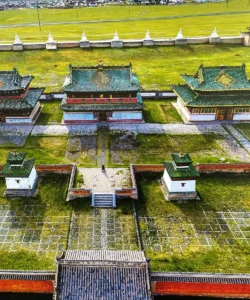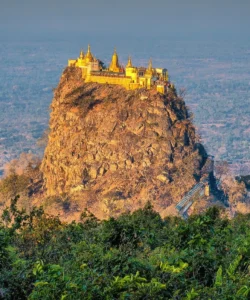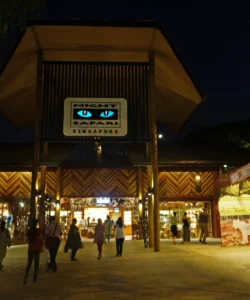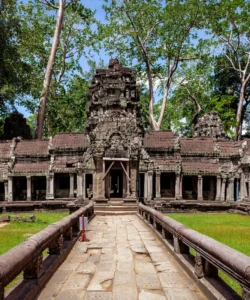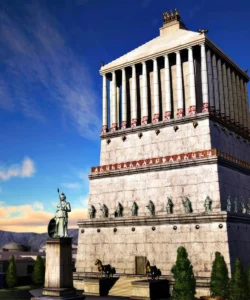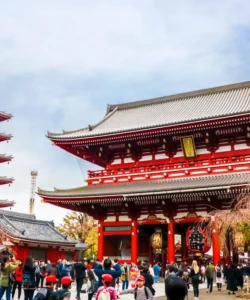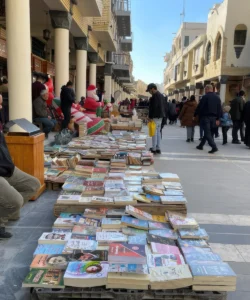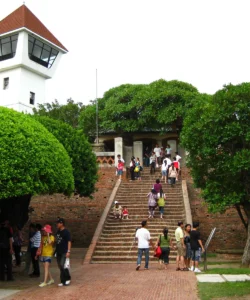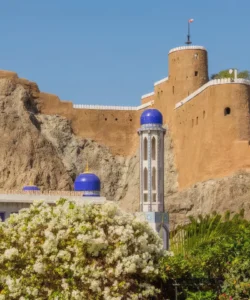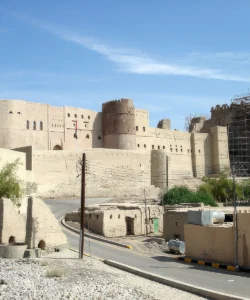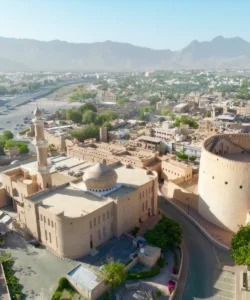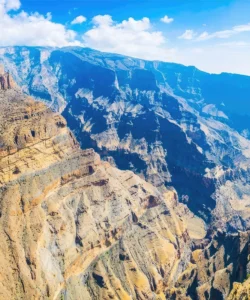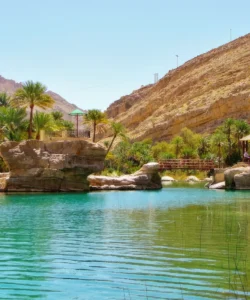Bahla Fort, a remarkable UNESCO World Heritage Site, is one of Oman’s oldest and most impressive fortresses. Located in the Ad Dakhiliyah Governorate, this immense mud-brick fortification stands as a testament to Oman’s rich medieval history and sophisticated architectural and engineering skills.
Listen to an introduction about Bahla Fort
Name and Address
- Name: Bahla Fort (Arabic: قلعة بهلاء)
- Address: Located in Bahla, Ad Dakhiliyah Governorate, Oman. It is approximately 40 km from Nizwa and about 200 km from Oman’s capital, Muscat.
How to Get There
Bahla Fort is well-connected and easily reachable:
- By Car: Driving is the most convenient way to reach Bahla Fort. From Muscat, it’s about a 2-hour drive via Route 15 towards Nizwa, then Route 21 directly to Bahla. From Nizwa, it’s a shorter 30-40 minute drive on Route 21. A 2×2 (normal) car is sufficient, as the road is mostly highway. Free parking is available at the base of the fort.
- Public Transport: Mwasalat bus routes connect Muscat and Nizwa to Bahla Souq. Shared taxis are also an option from Nizwa.
- Organized Tours: Many tour operators in Oman offer excursions that include Bahla Fort, often combined with other historical sites in the region like Nizwa Fort and Jabrin Castle.
Landscape and Architecture
Bahla Fort is a sprawling complex that showcases a unique blend of traditional Omani architectural styles and strategic defense.
- Mud-Brick Construction: The fort is predominantly built from unbaked mud bricks on stone foundations, a traditional Omani material providing excellent insulation against the desert climate.
- Extensive Walls and Towers: The fort, along with the old town and oasis, is enclosed by an extensive 12-kilometer (7.5 mi) long fortified wall with sentry walks and watchtowers. The fort itself features massive walls and towering structures.
- Complex Layout: The fort is divided into several areas, including the oldest part, Al Qasabah (the inner fortress), Bait Al Hadith (the “Modern House” from the 19th century, used as a governor’s residence), and Bait Al Jabal (the “House of the Mountain” from the 18th century).
- Strategic Location: Built on a high rocky hill, it overlooks a lush oasis of palm trees, which was historically watered by an ancient falaj (irrigation) system. This strategic position offered excellent defensive capabilities.
- Pre-Gunpowder Style: Its pre-gunpowder era design includes rounded towers and castellated parapets, reflecting the sophisticated defensive architecture of the medieval Islamic period.
- Integrated Settlement: The fort is part of a larger historical oasis settlement that includes traditional mud-brick dwellings (harats), mosques (like the adjacent Friday Mosque with its ornate mihrab), and a souq, all enclosed within the perimeter wall.
What Makes It Famous
Bahla Fort holds significant fame for several reasons:
- UNESCO World Heritage Site: It was inscribed as Oman’s first UNESCO World Heritage Site in 1987, recognizing its outstanding universal value as an example of a fortified oasis settlement from the medieval Islamic period.
- Oldest and Largest Fort: It is considered one of the oldest and largest forts in Oman, with parts dating back to before the arrival of Islam (pre-630s AD) and significant structures from the 12th-15th centuries.
- Banu Nebhan Dynasty: It was the seat of power for the Banu Nebhan tribe, who dominated central Oman from the 12th to the late 15th century and controlled crucial frankincense trade routes.
- Architectural Preservation: Despite being in ruins for a period, a meticulous 20-year restoration campaign using traditional methods has preserved its authenticity and showcased its unique mud-brick architecture.
- Associated with Legends: Locally, Bahla is believed to be the birthplace of “Black Magic,” and the fort has a reputation among locals for hosting paranormal activities at night, adding a mystique to its history.
- Cultural Hub: Historically, it was a significant center for learning, particularly in Islamic studies, medicine, and astrology.
Differences from Some Other Attractions
Bahla Fort offers a distinct experience compared to other attractions, including Nizwa Fort:
- UNESCO Status and Restoration: Bahla Fort’s UNESCO World Heritage status is directly linked to its extensive restoration efforts to preserve its traditional mud-brick construction, which distinguishes it from many other forts that may not have undergone such specific conservation.
- Ancient Origins: While Nizwa Fort has earlier underlying structures, Bahla Fort’s strong connection to the pre-Islamic era and its role as the seat of the Banu Nebhan dynasty from the 12th century highlights its deep historical roots as an ancient fortified oasis settlement.
- Integrated Oasis Community: Bahla Fort is notable for encompassing an entire walled oasis settlement, including traditional mud-brick houses, mosques, and a falaj system, offering a broader historical context of community life within its defenses, unlike Nizwa Fort which is more focused on the fort structure itself within the modern town.
- Construction Material: Bahla Fort’s primary construction entirely from mud-brick and adobe sets it apart from other Omani forts (like Nizwa Fort) that often incorporate more stone in their foundations or prominent towers.
- Less Crowded Experience: Compared to the more frequently visited Nizwa Fort, Bahla Fort often offers a less crowded experience, allowing visitors more freedom to explore its vast complex and appreciate its historical solitude.
Bahla Fort Photos:

































